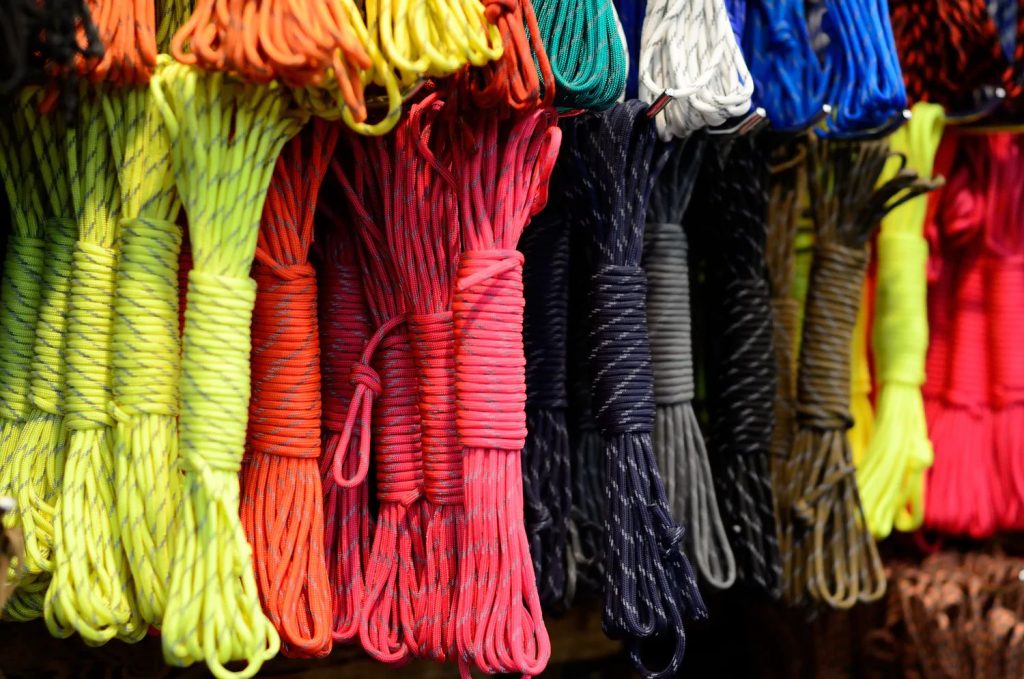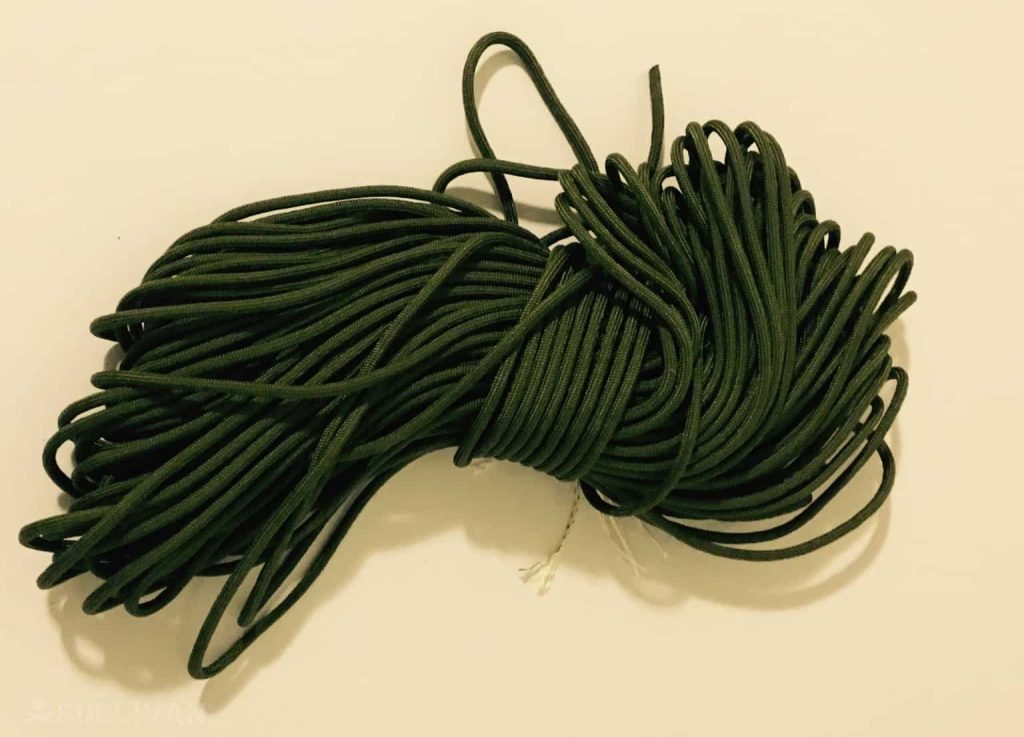Paracord is another thing you should store in your survival backpack.
The paracord has hundreds of functions that will simplify your bushcraft work and help you in survival situations. Its unique texture and material make it resistant to mildew and more elastic than a regular rope.
When buying a paracord, you must understand the labeled numbers and types.
Each paracord type has a different strength rating, so let’s discuss how much weight can paracord hold based on its number.

How Much Weight Can Paracord Hold
Each paracord has a different weight limit. The most common paracord type is 550, with a static rate of 550 pounds or up to 160 pounds safe working load. The paracord might be elastic and strong, but its safe working load is always 20% to 30% of its weight rate. Adding knots to the paracord reduces its strength.
The paracord strength depends on the paracord type and thickness. The strongest paracord ever is the Paramax Paracord, 3,000 pounds. But, it might not be the best option to carry in your survival backpack since it is heavy and thick.
Every paracord has a static and working load. The strength may vary depending on what you use the paracord for and its type.
The static load points to the maximum strength of the cord when in a fixed position. The manufacturers usually test the static load by attaching the cord to a fixed object and pulling it until it snaps.
Conversely, the working load is the recommended weight of the objects you can use the paracord with while in a fixed position. This weight limit allows for a bit of friction and external forces that might affect the cord’s strength.
How is the paracord strength measured
The manufacturers of most paracords measure their strength by clamping the paracord between two grips. Then, the manufacturer adds weight to one end of the paracord until it breaks. Also, some testers measure the possible deforms and breaking chances when an object is dropped.
What Affects the Paracord Strength?
Thickness
The thickness is the most crucial factor that determines the strength of a paracord. If you need a stronger paracord, choose the thicker option. But, you should know that thicker paracords are also heavier and take more place in the backpack.
Length
If the cord is exposed to a dynamic force, its length might add additional stress. Always ensure the cord is well-tightened to reduce the speed and force on the line. The longer the paracord is, the more unstable the paracord will be. The length makes the tied object unstable and increases the possibility of breaking the cord.
Standards
The more standards the cord has, the better strength it will provide. The minimum rating of a paracord is inside the line. The higher the standard, the more spreads will be inside the line. This makes the paracord much more robust and resistant to catastrophic failures.
Read more: What Can You Do With Paracord?

Knot type
Each paracord gives 100% of its strength when it has no knots added.
The strength of the paracord reduces depending on the knot type and number. The figure 8 knot is the one with the lowest strength-reducing percentage. Only this knot type can give 80% of the knot strength, while all other knots can reduce it to 60% or 70%.
On a scale, the Figure 8 knot has a success rate of 80%, then the double fisherman’s, bowline, and water knot with 75% to 70%, and the clove hitch and overhand knots with the lowest rate of 65% to 60% strength.
Cord age
The paracord may get weaker with age, so it is essential to consider how long you have it and when it is time to replace the current with a new paracord. But age is not the only factor determining the cord’s weight hold limit.
It is also essential to know where you have kept the paracord and if external factors can affect its strength. Check if the paracord has discoloration, tears, or signs of dry rot before using it.
Water and chemicals
Water and chemicals can significantly affect the paracord strength. Chemicals have an abrasive effect on the cord and might decrease its elasticity. Water also stretches the fibers of the paracord, reducing its strength to 75%.
Force
The paracord strength changes if the tied object is moving. So, the stationary load always has a higher rate than the moving load. In other words, the paracord’s strength varies depending on the static and dynamic force.
Static force is the fixed load that does not change its position or direction. Dynamic force is the moving load that pulls and changes the direction of the paracord.
Paracord Uses
The 550 paracord is the most commonly used cord for bushcraft. It might help you secure your shelter and fix broken shoes or clothes in most situations. However, there are dozens of ways to use the paracord and the inner threads when it comes to surviving.
With the paracord, you can:
- Secure a shelter
- Hang a bear bag
- Secure a tent
- Make bottle carriers
- Secure a splint in place
- Tie and haul timbers
- Secure tools on your backpack or waist
- Make a fishing line from the inner threads
- Make a bow, etc
You should never use paracord 550 or 750 for climbing or other risky actions. These cords might have good construction and dynamic force rate, but you should never put your life at risk since they are too thin and might cause fatal consequences.
Also read: How to Work a Ratchet Strap
Conclusion
Knowing how much weight can paracord hold will help you determine the ways you can use it. In most cases, paracord 550 is the most used type for bushcraft and camping because of its strength to secure tents and emergency shelters.
Always check the condition of the paracord before using it and store it in a dark place, away from water, chemicals, and sharp objects.
